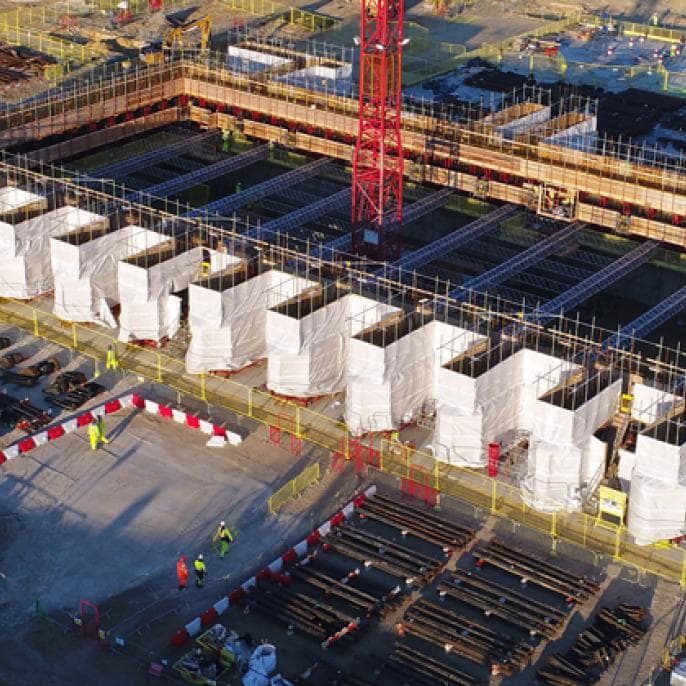Ferrybridge power station case study available
A large scale, technically complex slipform operation wassuccessfully used to construct a 30-metre-high turbine hall for a new power station in West Yorkshire.
Ferrybridge Multifuel 2 is a second wastederived generating facility at the former Ferrybridge Power Station site in West Yorkshire. When complete it will have a generating capacity of around 90MW – enough energy to power 160,000 homes – and is expected to treat an average of 570,000 tonnes of waste material each year that may otherwise be disposed of as landfill. To construct the main turbine hall for the power station, Hanson Concrete supplied a continuous 4,400m3 slipform concrete pour over 11 days, working 24 hours a day. The slipform rig used to place the concrete was one of the largest of its kind in Europe, measuring 60 metres long, 30 metres wide and reaching a height of 24 metres. It rose on 178 jacks with 120 construction workers manning its working platforms.
The concrete was supplied in more than 600 deliveries from three batching plants: the bulk of the material was supplied by the purpose-built on-site plant with supplementary deliveries from off-site plants at Castleford and Wakefield.
The ambient temperature range was -4ºC to +8ºC during placement and a range of bespoke mixes was developed to cater for the challenges the temperature differential placed on the setting pattern in each layer of the continuous lift. To add to the technical challenge, each layer required in excess of 100m3 placed at four pumping locations spread around the rig.
